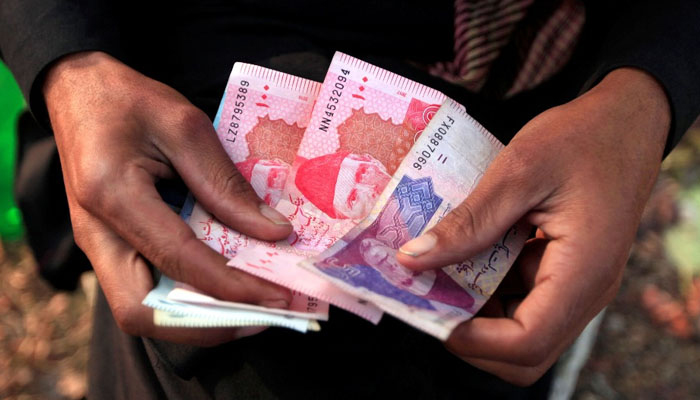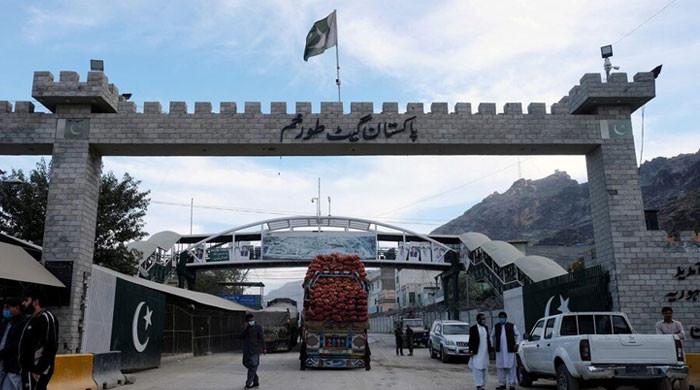Pakistan's key economic indicators show govt's policies fueling growth
PTI govt followed liberal foreign investment regime, introducing measures to promote doing business in Pakistan
November 27, 2020

ISLAMABAD: Pakistan's key economic indicators have started to show that the PTI-led government's policies are fueling growth, with expansion witnessed in remittances and foreign direct investment and the primary balance in surplus, APP reported.
Pakistan's economy witnessed positive signs during first quarter of the ongoing fiscal year 2020-21 (FY20-21) as remittances grew 26.5%, foreign direct investment (FDI) rose 9.1%, tax collection went up 4.5%, and the primary balance has been in a surplus worth Rs258 billion.
According to official sources, the PTI government's "prudent and timely policies" bolstered large-scale manufacturing (LSM), which registered a 4.8% growth, while the cement sector expanded 20% at 100% capacity utilisation.
Read more: 'Pakistan economy is packed with potential'
A significant increase was also witnessed in sale of cars, motorbikes and tractors during July-October 2020.
The recent data complements the strengthening and expansion of the economy in a "recovery" phase amid the coronavirus pandemic. It is also evidenced by the fact that Moody’s upgraded Pakistan’s economic outlook to 'Stable' in August 2020.
Pakistan has registered an upward trend in foreign remittances and FDI, indicating confidence in Pakistan’s economy. In fact, consumers are also 7% more confident about the overall economy and their personal finances than they were in mid-2020, according to a recent survey.
Also read: Shaikh says higher implementation of WTO's TFA 'adding value to Pakistan's economy'
The PTI government followed a liberal foreign investment regime and introduced measures to promote Ease of Doing Business (EoDB) in the country, leading to an improvement in Pakistan's ranking from 147 and 136 in 2018 and 2019, respectively, to 108 in 2020.
The government inherited a concerning economy when the PTI had come into power following the 2018 general elections and, therefore, had to introduce a strict financial discipline to curtail excessive government expenditure, bolster revenue, introduce market-driven exchange rate, remove large tax exemptions, and discourage imports.
As a consequence, Pakistan has witnessed improvement in fiscal and current account deficits. The country has also recorded a primary balance surplus, which is unprecedented. All fundamental economic indicators reflected significant improvement before the coronavirus pandemic.
Related: World Bank points out serious downside risks to Pakistan’s economy in FY21
Prime Minister Imran Khan's administration introduced smart lockdown to contain the spread of the disease as the pandemic hit, ensuring that the economy remained functional. That, in turn, allowed many businesses to reopen or continue operations on a limited scale to dampen the adverse economic impact.
The government took several initiatives to facilitate agriculture and constructions sectors to accelerate economic recovery. PM Imran Khan had approved a Rs24-billion package to slash the input costs for farmers, whereas a relief package for small- and medium-sized enterprises (SMEs) shielded against insolvency and joblessness.
The Rs144-billion Ehsaas Emergency Cash Programme provided immediate cash relief worth Rs12,000 to 15 million families of daily wage-earners hit by the coronavirus pandemic.
Also read: SBP says Pakistan saw negative economic growth in 2020 for the first time after 1952
In his virtual address to the World Economic Forum (WEF) on November 25, Adviser to the Prime Minister on Finance and Revenue, Dr Abdul Hafeez Shaikh, said the PTI government "firmly supports private sector as an engine of growth and believes in building institutional capacity for sustainable and inclusive economic growth".
Related:
Development work in Karachi needed to improve Pakistan's economy: Hafeez Shaikh











